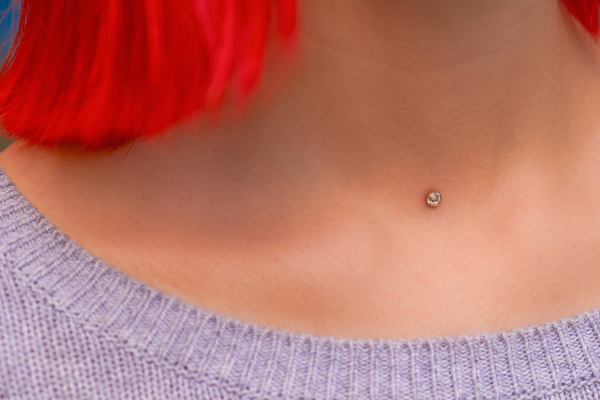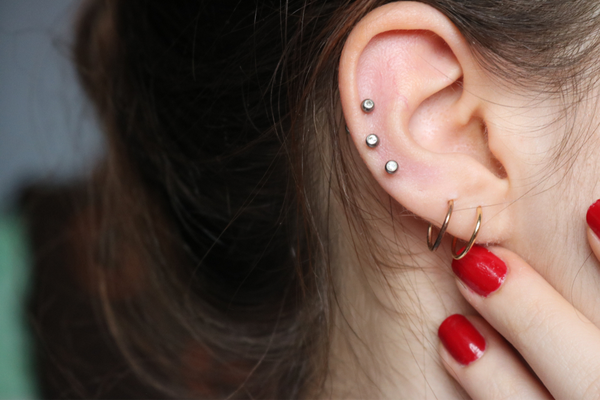Piercings have become more and more popular over the years. Women and men everywhere have been getting piercings all over and in the weirdest places on the body. They have also been used as a way to show confidence, women enjoy showing off their belly button piercings too. The most common type of piercing is the classic, but there is also a dermal piercing, and not a lot of people know the difference.
Overall, piercings in general are fun but also painful. Whether you are considering getting a piercing or learning more about them, we have got you covered. Below we outline the two and help you choose which one is better.
What Is A Dermal Piercing?

You are probably wondering what a dermal piercing is and what the difference is. When it comes to dermal, this is when they anchor in the piercing into a layer of skin. Unlike other piercings, this doesn’t have an exit hole, because the piercer creates a small hole and then inserts the anchor into the middle layer of skin. Then the jewelry is screwed to the top of the anchor and sits on the surface.
This way when people look at the piercing it looks like a bead on your skin.
The anchor that the piercer will use is usually 6-7 milliliters, and they can go anywhere as long as the skin is flat. Also, the skin needs to be thick enough to hold the dermal anchor. Some common places people do dermal piercings are on the cheekbones, chest, lower back, and thighs. One thing you might also be wondering is the price, expect to spend around $70-100 depending on the place.
Jewelry Used For Dermal Piercing

Of course, when getting this done, you are also thinking about jewelry. You want to make sure that you are also going in knowing the type of jewelry you want them to put in. The type of jewelry used will depend on the way the piercing is done though! Some types are surgical titanium, which is good for sensitive skin and may be less likely to cause irritation.
Another is Niobium, another jewelry that is good for people with sensitive skin that tend to get bad reactions.
Lastly, Gold is a common one but it’s recommended to use 14K yellow or white gold. Also, when using Gold keep in mind that it has been known to lead to infections and allergic reactions. Contact your piercer or piercing shop and ask them beforehand which one they recommend for you, especially if you are common in having bad reactions.
Classic Body Piercings

Another common type of piercing is the classic body piercing. This is just a regular piercing where a needle is inserted in the skin to then place a piece of jewelry. This the one you usually see on most people, on almost every body part that can be pierced. Classic body piercings, all are priced depending on where you are getting them done too. earlobes or cheek are usually $20-60.
Whereas, anywhere else on the body (eyebrows, belly button, nipple) will range from $30-65. Classic body piercings will hurt depending on what you are piercing. The most painful piercing is the Daith, which is in the inner cartilage of the ear above the ear canal. Another know painful one is the nipple piercing, but of course, we all can guess how painful that one is without getting it done.
Are Dermal Piercings Painful?
Although dermal piercings look cool you might be wondering if they’re painful. Any time you get a piercing you know that you will possibly experience some type of pain. Dermal piercings will hurt but not any different than any other piercing you will get. According to experts, how you feel depends on the placement of the piercing, your pain tolerance, and the experience of the piercer.
Make sure when you get this done you keep these things in mind.
The Healing Process
Now that we know a little more about dermal piercings, let’s talk about healing. Anytime you pierce anything on your body it will take a while to heal and stop having pain. This type will take you one to three months, depending on you and if you follow aftercare rules. Especially since you might see some swelling and crusting after getting this done, so make sure to really take care of it.
Also, dermal piercings are semi-permanent unlike classic piercings too, so talk to your piercer about preventing irritation. When it comes to classic piercings, they heal faster than a dermal piercing, usually six-twelve weeks depending on you. The ones that take longer to heal are the ones further up the ear, which might take months. No matter what you pierce expect some pain, and a bit of aftercare!
Which piercing do you prefer? Sound off below!


